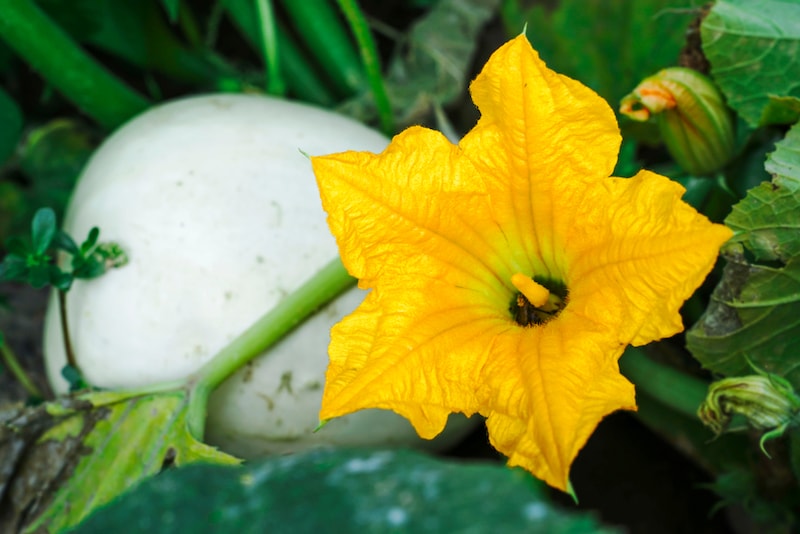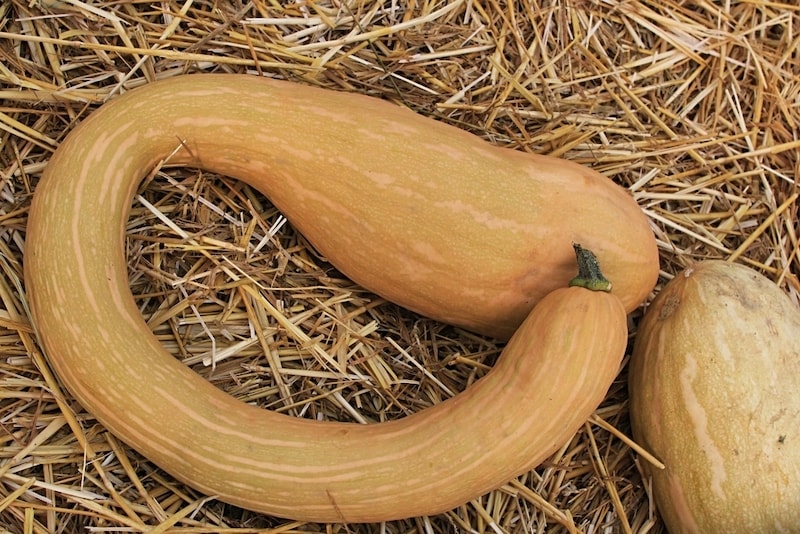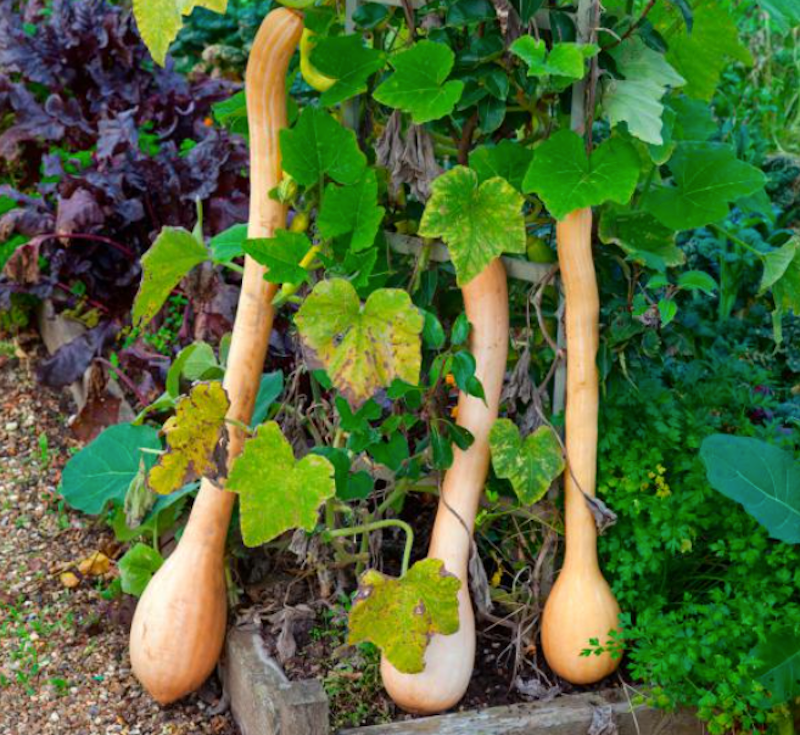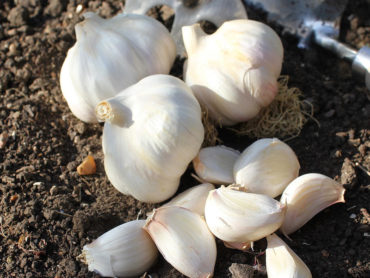A tromboncino is a type of squash plant which produces extraordinary fruits that grow to two feet long! Similar in taste to courgettes but with a much sweeter flavour, this variety is a firm favourite in Italy. Here’s everything you need to know to grow this climbing squash in your garden.
What is a tromboncino squash?

Image: Bilal Kocabas/Shutterstock
A tromboncino is similar to a butternut squash, but is usually picked in the summer when the fruits are still fresh and green. At this point it has a similar, but sweeter, flavour to a courgette. Left on the vine for longer, it will ripen to a lovely buttery colour.
Tromboncino grows happily as a climbing squash. The long fruits hang down from the vine, becoming a real eye-catcher in the garden. Some think that training the squash vertically makes the fruit straighter, otherwise they can develop into fun curved shapes. However, the plants also grow happily rambling across the ground.
One tromboncino plant supplies enough fruit for two people over a summer. A vine produces up to six fruits, each weighing in at around 800g to 1kg.
How to grow tromboncino

Image: Alex Cofaru/Shutterstock
Sow your tromboncino seeds on their edge in trays of moist seed compost. Keep the trays on a sunny windowsill or in a heated propagator. The seeds should germinate within seven to ten days if kept between 15ºC and 20ºC.
You can also sow your seeds directly outdoors once temperatures rise at the end of May. Make sure you space them 60cm apart, sowing two seeds per hole. Simply pinch out the weaker seedling after a few weeks, keeping the strongest plants to grow on. Sowing to harvest takes roughly eight to ten weeks.
Allow your developing vines to ramble over the ground or train them up a trellis, but make sure any support is strong enough to bear the weight of the fruit. Pollination is usually straightforward, as the plants produce both male and female flowers. The females have a tiny bump behind the flower which is the pre-adolescent fruit.
If you don’t have the time or space to sow seeds, it’s really easy to order a few peat-free tromboncino plug plants. Just make sure to harden them off for 10 days before planting outdoors.
Can you store tromboncino squashes?

Image: ZayacSK/Shutterstock
Tromboncino squashes have fairly thin skin when picked in the summer. If you want to store your harvest into winter, pick them later in summer or even early autumn when the skins have turned a lovely peachy colour. If you allow the skin to harden, and the squash is kept in a cool and well-ventilated environment, the fruit will keep for a few months.
How to cook with tromboncino
Use the long thin section at the top of the tromboncino fruit to cook with; it’s seedless and has a lovely sweet flavour. The rounded end contains seeds, but the flesh around them is just as tasty. Use a spoon to remove the seeds before cooking. Treat your tromboncino like a regular squash or as a courgette substitute in dishes.
Here are some of our favourite serving suggestions:
- Spiralize the flesh into long healthy strands to use in place of spaghetti or noodles
- Cut the flesh into chunks and roast with whole garlic cloves and sea salt
- Grate into cakes and brownies to make them extra moist
- Cut into chunks for soup, to add to a smoky stew or as the main feature of a vegetable curry
- Stuff the mature male flowers with cream cheese, or another tasty filling, and deep fry.
If you grow tromboncino squashes this year, we’d love to see some photos. Share via our social channels. And if you have a favourite recipe, drop us an email or send us a message.
Lead image: Tromboncino plant from Suttons/Copyright: Alamy Stock Photo
Last Updated on November 8, 2024 by Suttons Horticultural Team






A. Parker, I have the same questions. I gave up on zucchini due to squash vine borers and squash vine bugs. At first I thought these bugs were the same, but I learned my lesson.
A. Parker, I have heard they are resistant to squash bugs, but not immune. These squash are supposed to hold up longer than other squash.
can I harvest seeds for next year when the tromboncino squash is still green or should I wait till it has turned orange and hardened? Also I have heard that tromboncino is immune to squash vine borer…is this true?